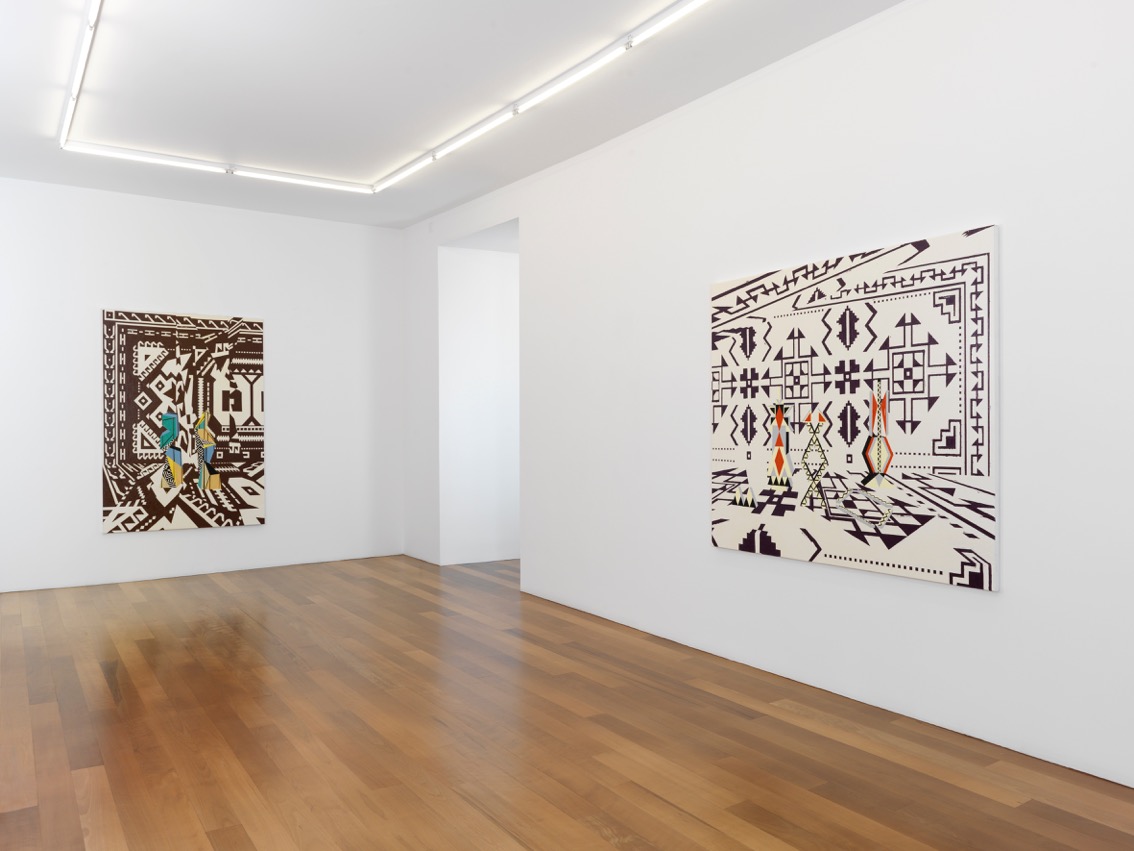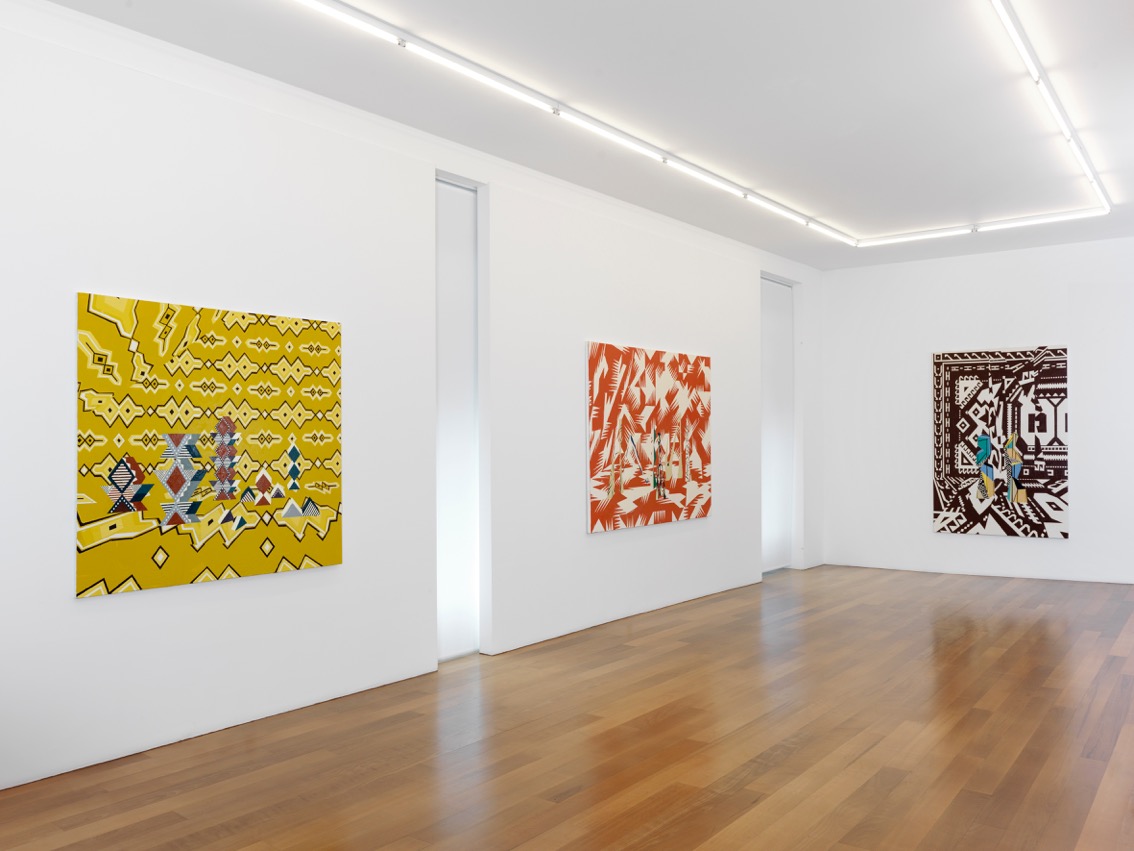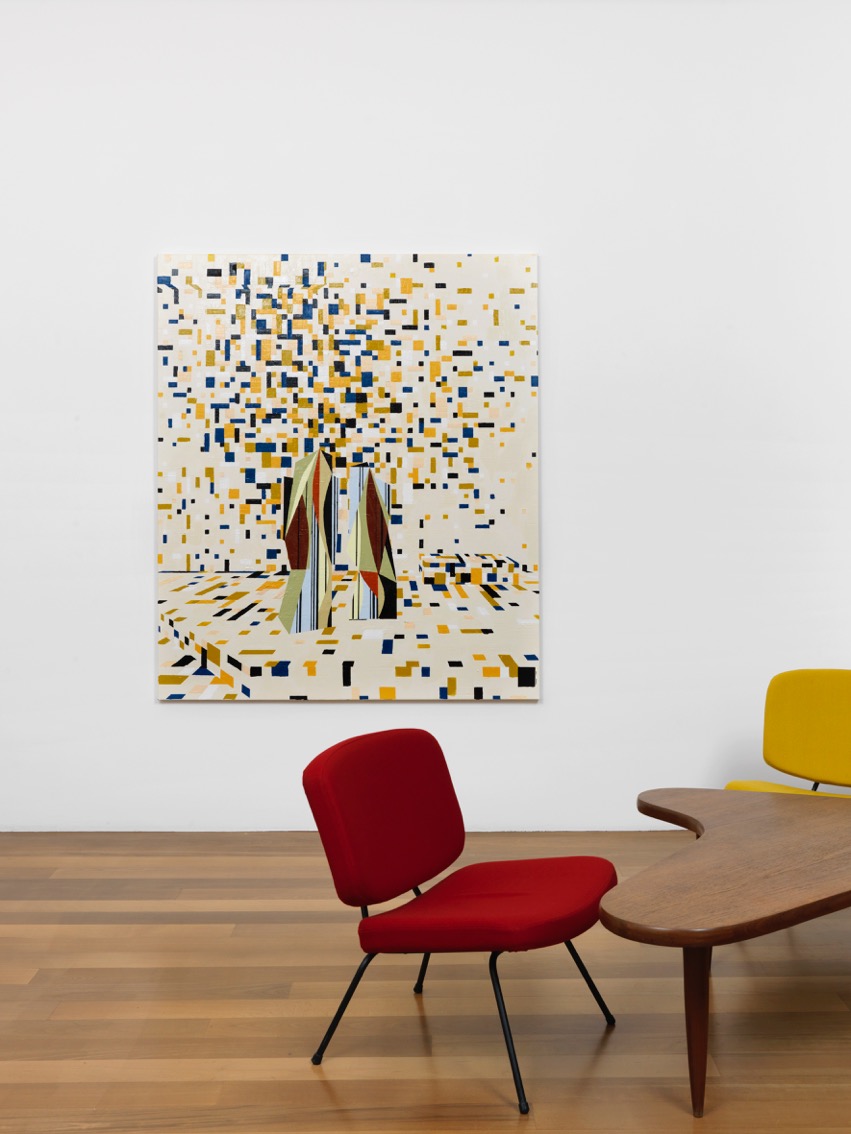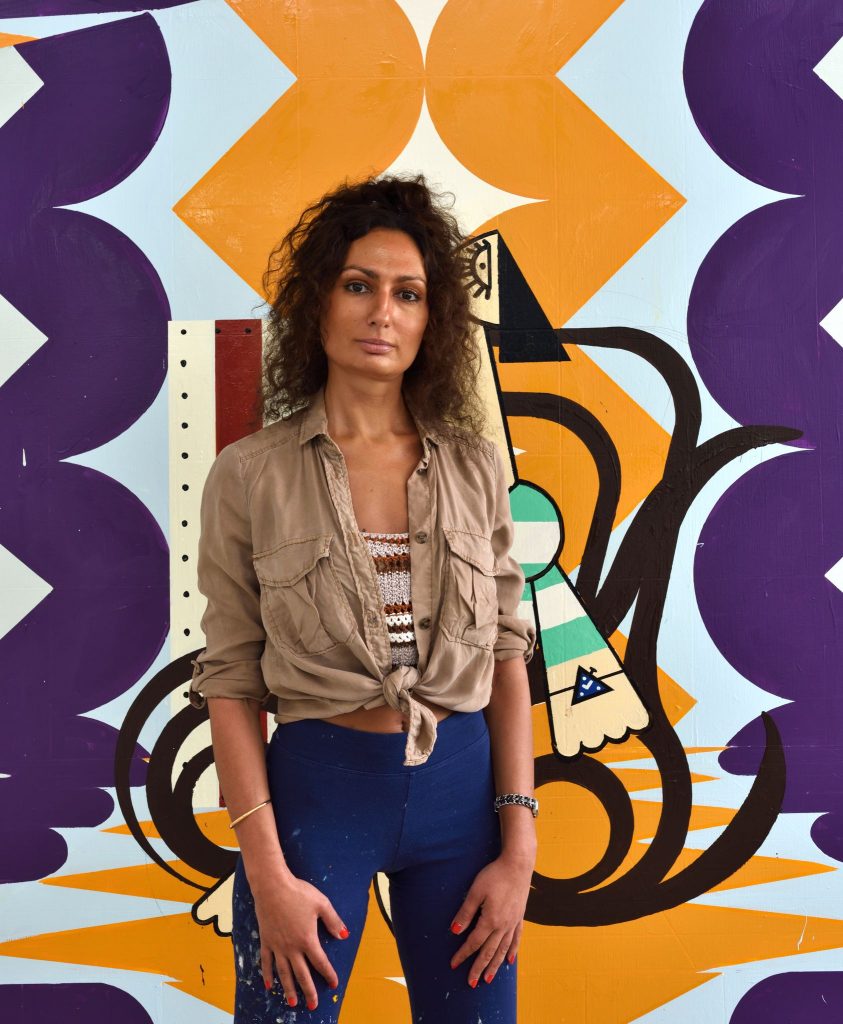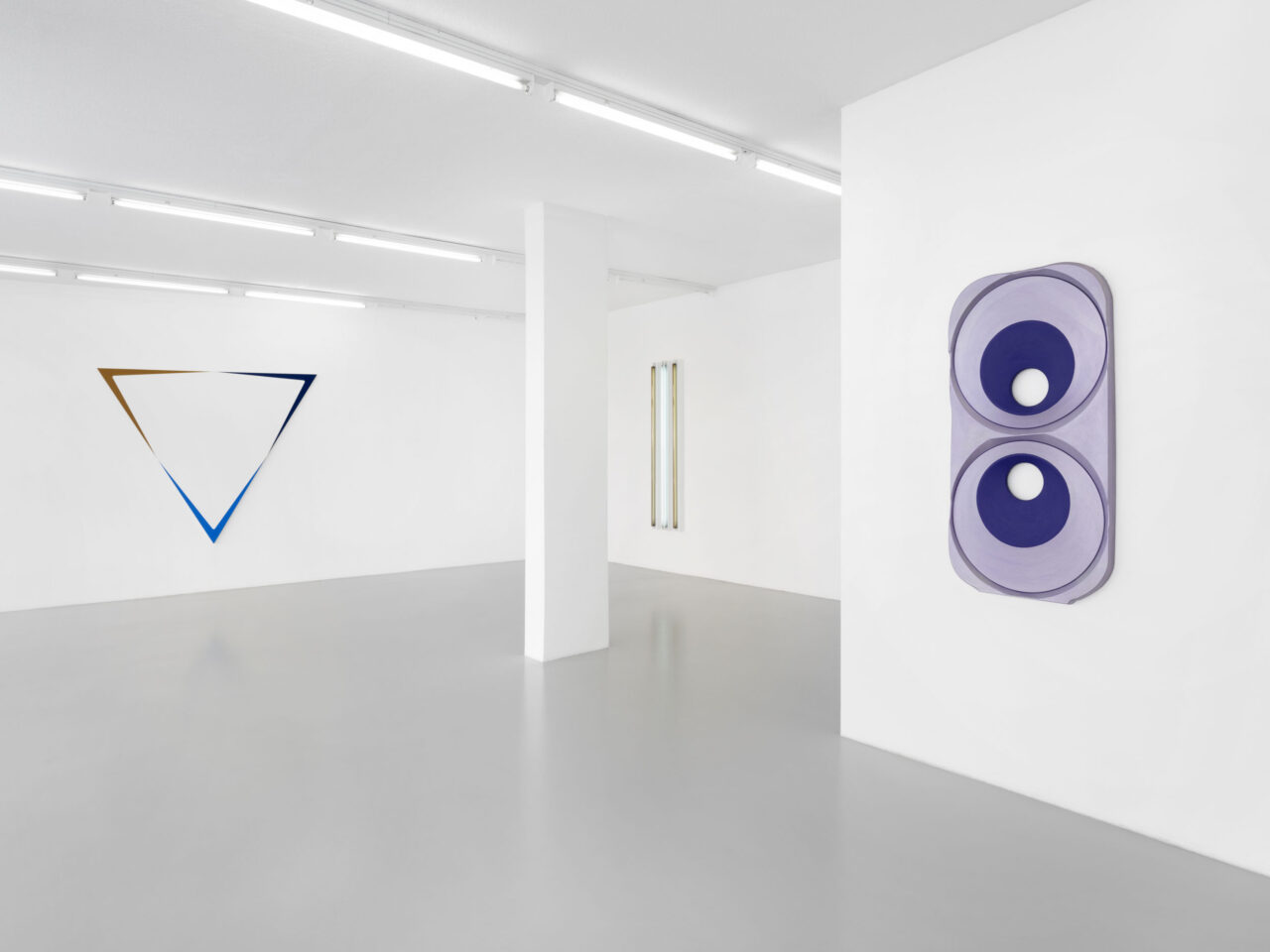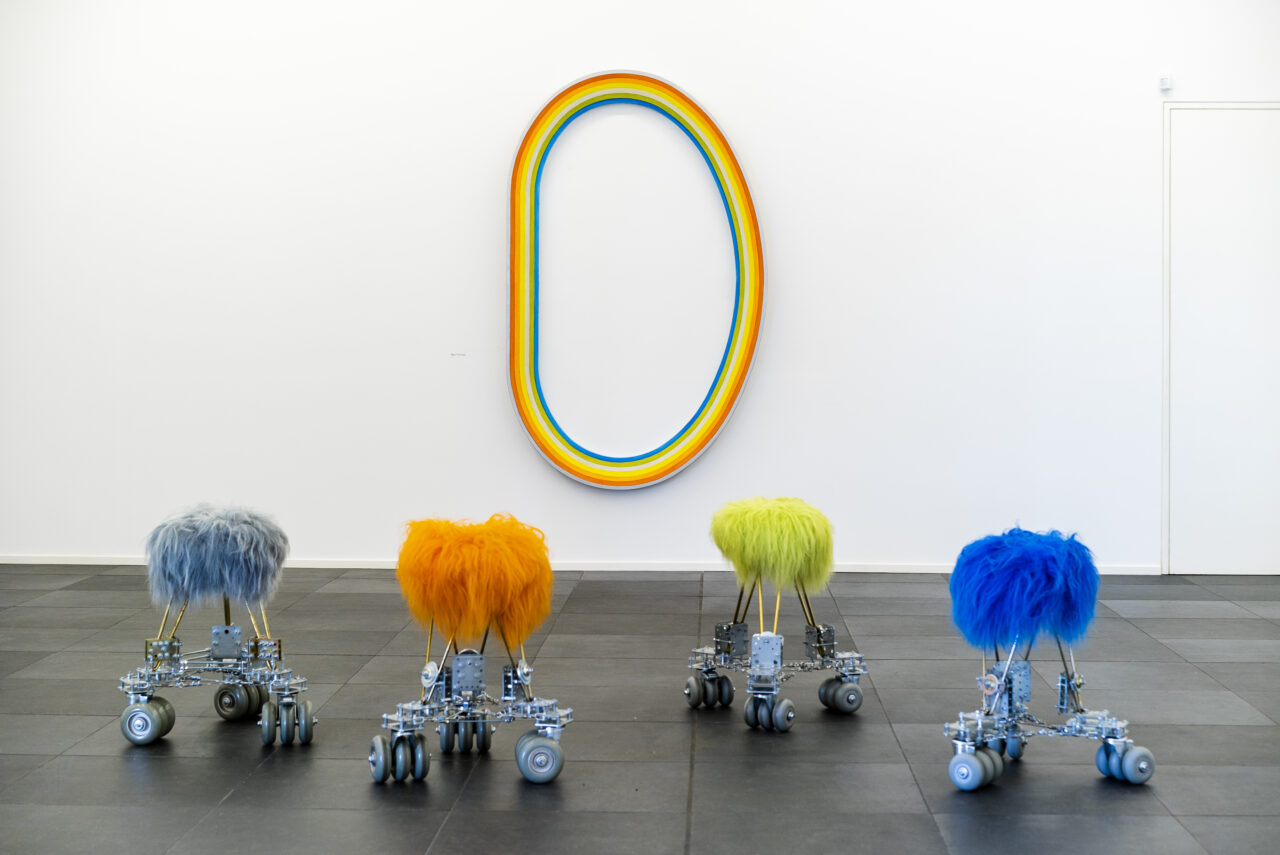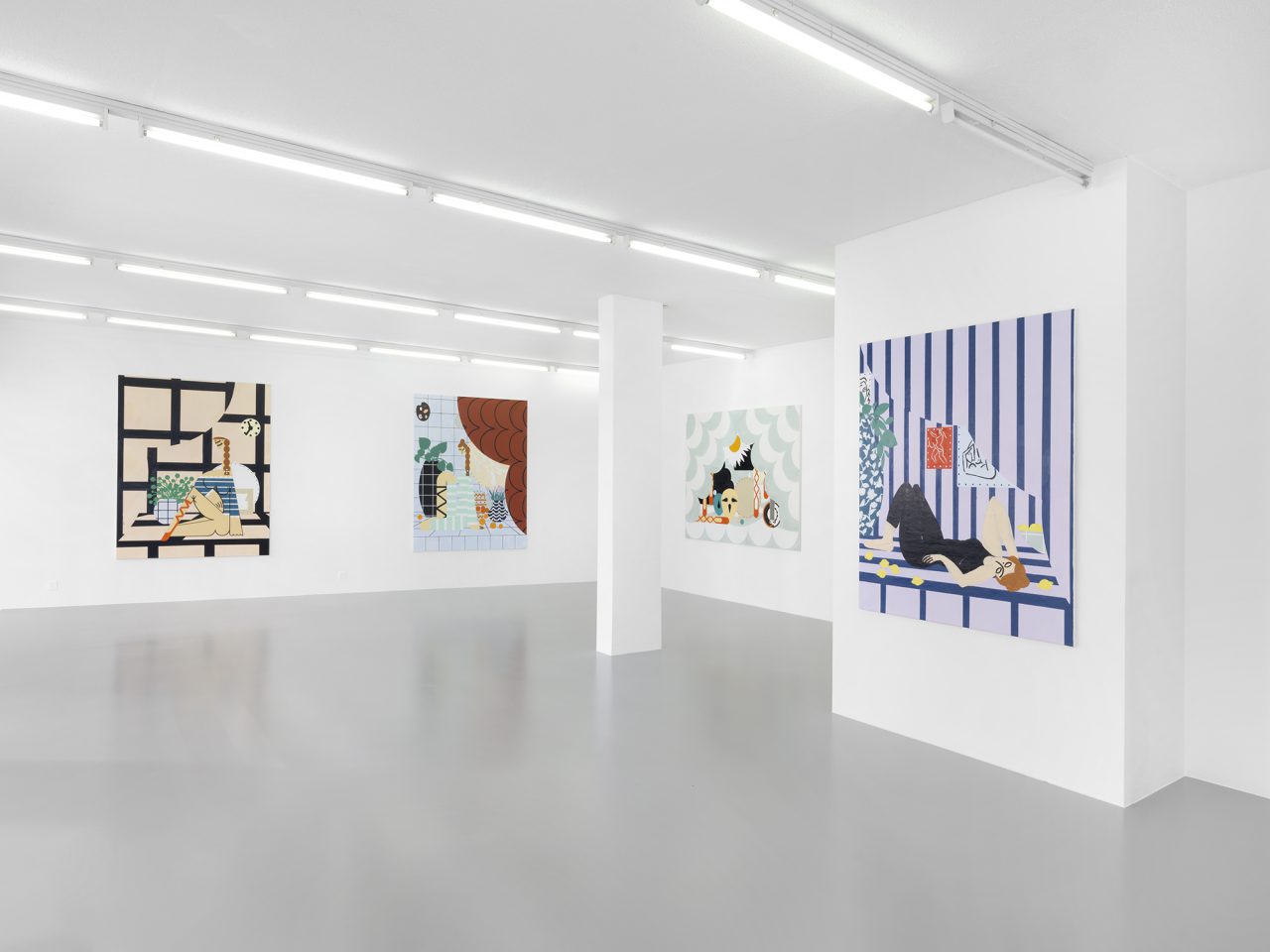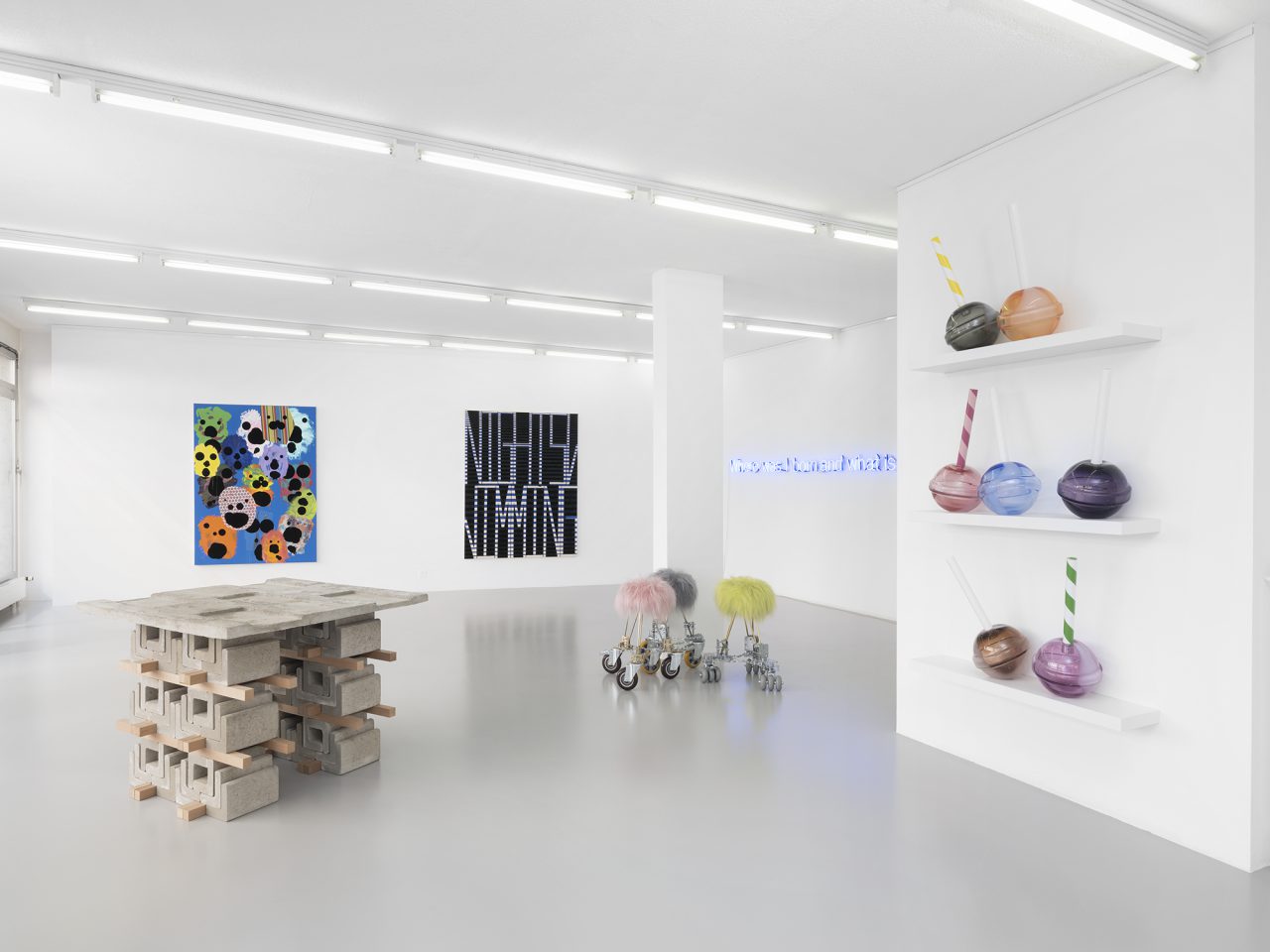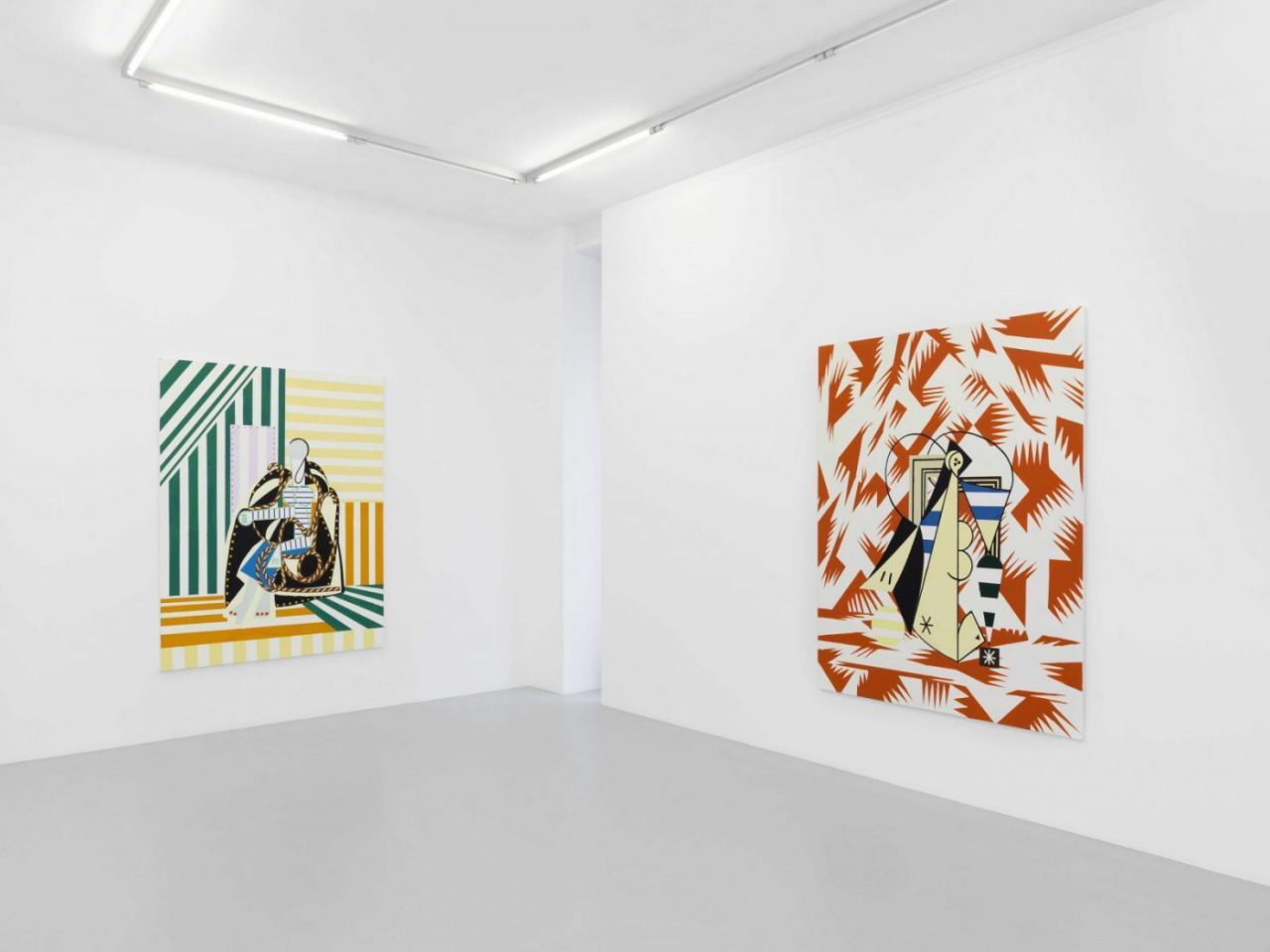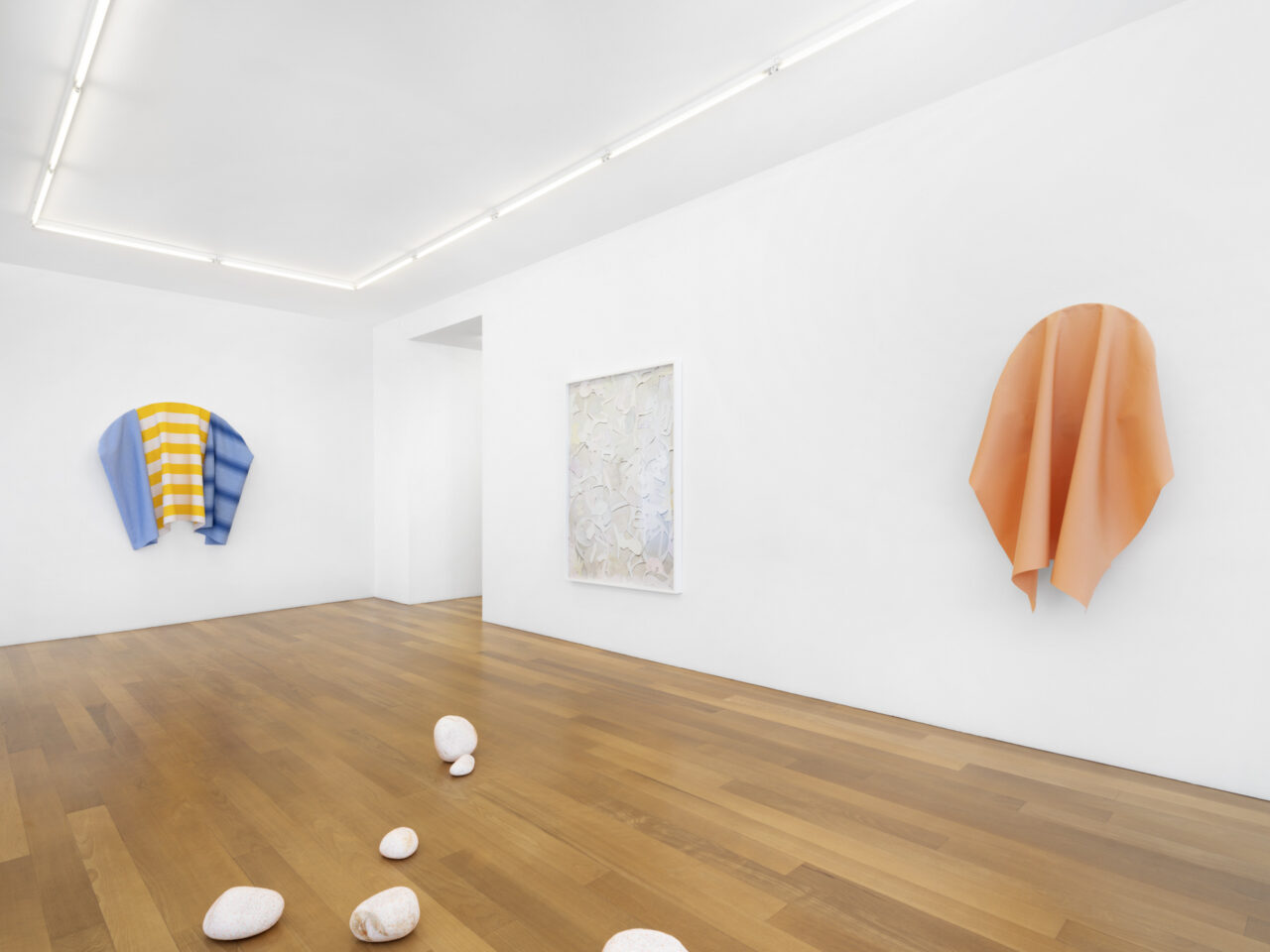Farah Atassi
Farah Atassi
19.09.14 → 01.11.14
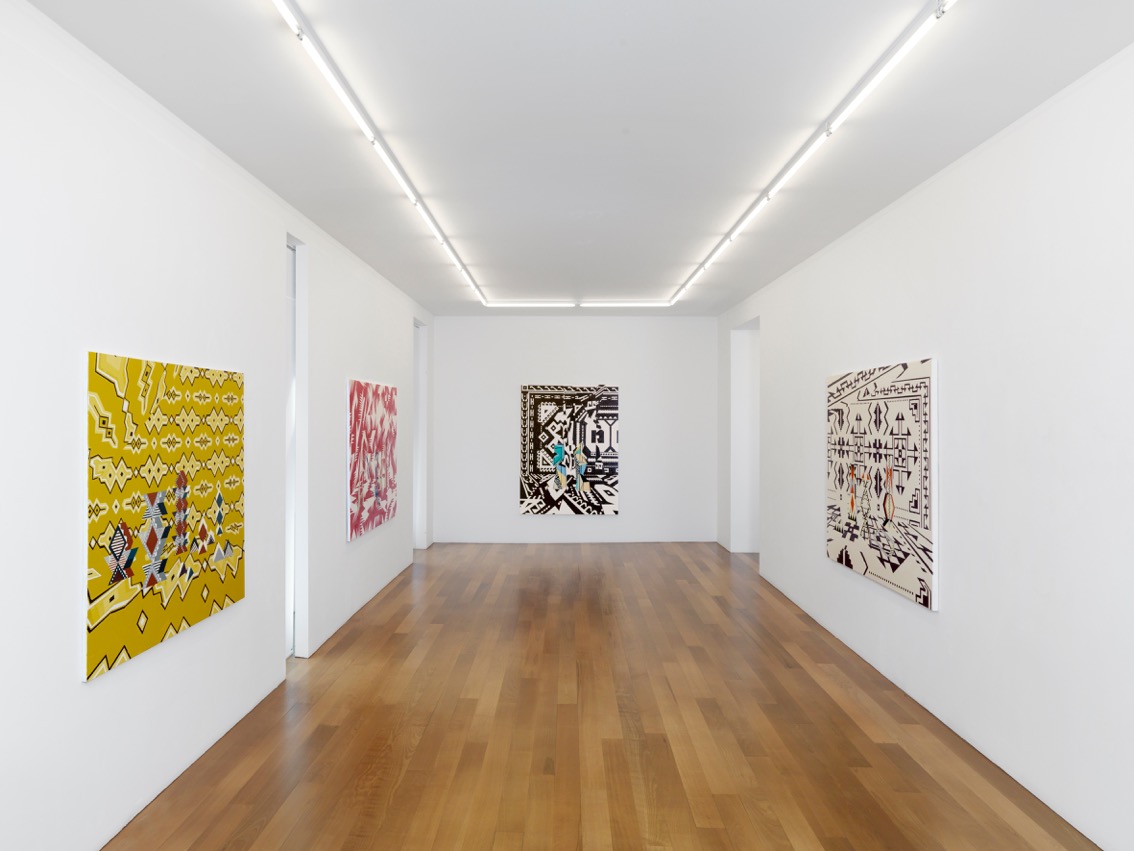
Galerie Xippas is delighted to present the first solo exhibition in Switzerland of French and Belgian artist of Syrian descent Farah Atassi. The exhibition includes a series of new paintings. On this occasion, art critic, art and film historian and curator Timothée Chaillou interviewed the artist.
Timothée Chaillou: Farah, in this exhibition you’ll be presenting 5 paintings (oil or aerosol on 150×190 cm and 130×162 cm canvases). Could you tell us about your works, how long they take from conception to the finished product; the preparation process; whether you have assistants? Do you start with collage and then work with disparate sources and forms? What are your documentary sources? Do you use 3D models?
Farah Atassi: I don’t have assistants, because I believe the difficulties and constraints I encounter when I’m painting are inherent to the process. This is actually something that has helped define my style. Playing with what I know or don’t know how to do, or being restricted by the time it takes for paint to dry are, for example, some of the complexities that have fashioned my art. These are difficulties that force me to find solutions and thereby to surpass myself, as much conceptually as formally. My work today is the outcome of a long journey that began in 2008 with my series on Soviet-era abandoned interiors. Since then, day by day, my work has evolved without me premeditating anything.
It’s true that at the beginning there’s a long process of stitching images together. These come from decoration books (patterned tiles, carpets, and architectural ornaments) and art history books. I take a lot of time before I actually start painting. Once my project is clearly planned, I start by defining a space on the canvas. Then I make a grid with adhesive tape that follows the painting’s perspective, like a 3D grid. I never use computer software. I use this grid to spread a pattern on the whole surface of the canvas. Then I begin placing objects in meticulously defined spaces, as if arranging them in a room. It’s like a composition built on a utopian space.
TC: Sculptures for Painting, Chromatic Setting, Folkloric Setting, Cut-Outs, Ornamental Setting: those are the titles of your paintings. They are descriptive, but do you hope they will lead to a new interpretation of the paintings themselves?
FA: Those titles serve as an indication. They define the concept behind the painting as simply as possible. In other words, what underpinned their creation: a folding surface or an ornamental montage, for example.
TC: You are slowly asserting your own style. What do you think of Heimo Zobernig’s idea that “Style is an existential necessity, the one unique remaining necessity. What I mean is to be recognized, being able to be identified. Repetition and redundancy allow me to be understandable, to possess a language”?
FA: As I mentioned, my style appeared without me looking for it, and I am not looking to maintain it. It created itself on the basis of some aesthetic and ideological affinities. I am fascinated with simple, universal forms. An entire lifetime would not suffice to explore everything that could be said about them.
I also believe that if you can’t paint something, it’s because you don’t want to. When I was studying Fine Arts for example, I remember being quite frustrated by not having a slick style of painting, by not being a virtuoso for detail and precision. Today, I have become aware that painting needn’t necessarily be like that. Actually it’s much more complex than that and I don’t like it when contemporary painters try to copy the techniques of the great masters.
TC: Your paintings are devoid of any human presence, even though they seem to call for it. Do you think a space is more evocative when it’s empty, more “haunting” because it’s “waiting” for a human or an animal presence?
FA: No, I wouldn’t say that. The majority of painters I’m passionate about paint human faces. The fact is that since I began this work on the representation of space and objects, I have immersed myself in it completely. I am determined to carry on along this path, because I believe it’s important to stick to your subject. On top of that, I don’t believe there is any hierarchy between painted forms. A vase might have just as much importance in a painting as a nude. I feel very close to Fernand Léger’s ideas on the subject that he developed in Functions of Painting.
TC: Your paintings are a collection of shapes and patterns, evoking the idea of the collective as a space for co-existence, encounters, dialogue, a collection of shapes, of objects, of patterns, all facing a multitude of viewers. Surprisingly, several interpretations of your paintings mention their coldness, their disturbing, melancholic, and monastic aspect: paintings pervaded with solitude. Yet to me they look rather saturated, crowded, as if they reflect the movement of a kaleidoscope or a mechanical ballet.
FA: I think that when the critics mention a certain melancholy or even coldness in my paintings, they are usually referring to my earlier series, the one on the interiors.
Nowadays, however, my paintings are dense, coloured and filled with a great number of objects. The decorative aspect appears more clearly through ornamental patterns, which is something I completely accept!
This transition from empty spaces to decorative interiors happened progressively as I took a deeper interest in geometric patterns. The transition came from the tiling I painted in some of my previous paintings. Little by little, this formed a grid: the object became a tool.
TC: Each of your paintings feature deconstructed patterns and embellishment. What do you make of this “nobleness of the decorative” (Matisse)?
FA: For me all art works have a more or less important decorative dimension, for sure. The moment you place an object, whatever it is, in a living room or a museum, its purely aesthetic aspect is revealed.
To my mind, it is necessary to balance out, or even hijack this decorative dimension. The way I spread my ornamental pattern on the whole surface of the canvas has an element of absurdity and madness. Lines are fragmented or broken, which reinforces the irrational aspect of the space. I have a deep-rooted attraction for decorative patterns, but I try hard to reinterpret them to add an element of mental elation.
I am wary of the purely decorative. “Nobleness of the decorative”, yes, because it’s amazing to feel the enjoyment it produces, but only on condition of knowing how to add other forms of elation to the canvas.
Having graduated from the National School of Fine Arts in Paris (ENSBA) in 2005, Atassi burst onto the scene at La Ferme du Buisson, at the Montrouge Salon, and within the framework of the Dynasty exhibition at the Paris Museum of Modern Art and at the Palais de Tokyo. Her work was also shown at the Pompidou Centre in the State Hermitage exhibition in 2010, which was curated by Bernard Blistène. Laureate of the Jean-François Prat Prize in 2012, she was nominated in 2013 for the Marcel Duchamp Prize before attending an artist-in-residency programme at the New York International Studio & Curatorial Program (ISCP).
Her works are part of several collections, including the National Museum of Modern Art/Georges Pompidou Center, Mac/Val (Museum of Contemporary Art in Val-de-Marne), France’s National Collection of Contemporary Art and Louis Vuitton – LVMH Foundation.
The contemporary arts centre Le Portique in Le Havre (France) will dedicate an exhibition to her from 24 November 2014 until 24 January 2015, and so will the contemporary arts centre Le Grand Café in Saint-Nazaire (France), from 11 October 2014 until 4 January 2015.
